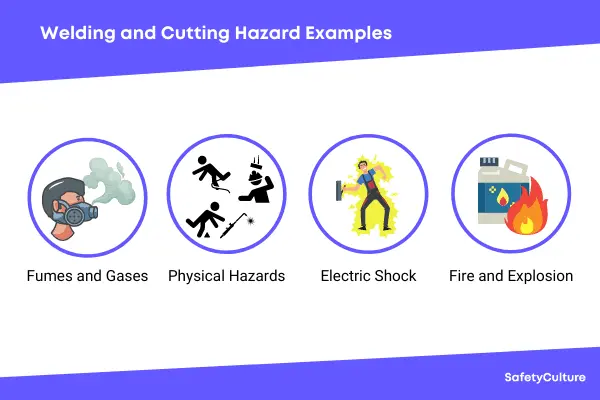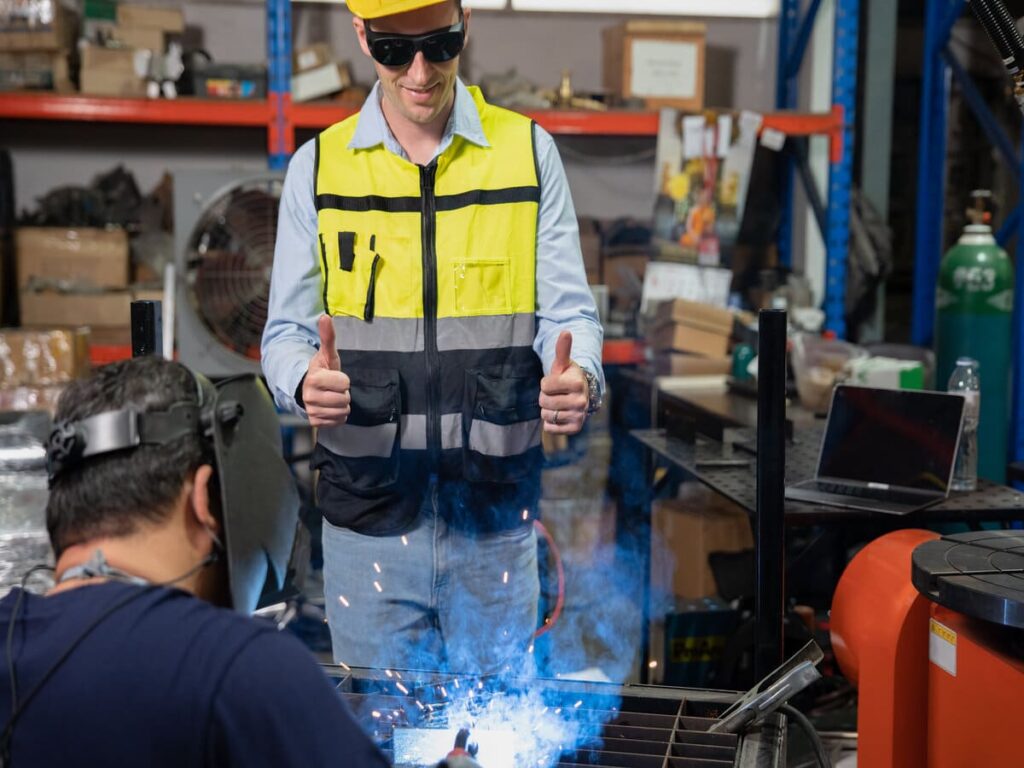The Ultimate Overview to Welding Inspection Racine for Industrial Criteria
The Ultimate Overview to Welding Inspection Racine for Industrial Criteria
Blog Article
Cutting-edge Approaches to Fillet Weld Evaluation and Screening: Enhancing Weld High Quality and Conformity Specifications
In the world of welding, the top quality and honesty of fillet welds play a crucial role in making certain the structural strength and integrity of different commercial elements. With the continuous drive for improved efficiency and compliance with stringent requirements, the expedition of ingenious methods to fillet weld evaluation and testing has actually come to be crucial. As markets develop, the standard approaches may no longer suffice in fulfilling the needs of contemporary welding applications. By embracing cutting-edge modern technologies and methods, a new perspective of opportunities emerges in the world of weld high quality assessment and adherence to conformity criteria.
Advanced Non-Destructive Testing Approaches
Using cutting edge technologies, progressed non-destructive testing approaches play a vital function in making certain the stability and top quality of fillet welds. These methods, such as phased variety ultrasonic testing (PAUT) and magnetic bit screening (MPT), deal detailed understandings right into the weld's internal framework without creating any damage to the product. PAUT, for example, utilizes multiple ultrasonic aspects to inspect the weld from different angles, giving a comprehensive visualization of prospective flaws like absence of fusion or fractures.
By employing these innovative non-destructive screening methods, weld examiners can precisely evaluate the quality of fillet welds, ensuring conformity with sector requirements and policies. The ability to detect imperfections early on not just improves weld quality yet additionally stops costly rework or failings in architectural stability, underlining the value of these cutting-edge testing methods in welding inspections.
Robotics and Automation in Examination
The assimilation of robotics and automation has transformed the inspection process for fillet welds, improving efficiency and precision in high quality analysis. Robotics use accurate control and repeatability in inspecting welds, making sure reliable and constant results. Automated systems can be set to follow details assessment paths, making sure thorough insurance coverage of welds and decreasing the risk of human mistake.
Robotic evaluation systems outfitted with innovative sensors can identify and determine weld attributes with high precision, providing thorough data for evaluation. These systems can identify flaws such as cracks, absence of blend, and porosity, enabling punctual corrective activities to be taken. Furthermore, robotics and automation enable real-time data collection and evaluation, offering immediate comments to drivers and assisting in quick decision-making processes.
In addition, using robotics and automation in fillet weld assessment improves general performance by decreasing examination times and increasing evaluation throughput. By simplifying the inspection process, makers can ensure weld high quality and conformity requirements are fulfilled efficiently, ultimately bring about set you back savings and boosted item quality.
Utilizing Artificial Knowledge for Analysis
Fabricated knowledge plays a crucial role in boosting the effectiveness and accuracy of evaluation in fillet weld inspection procedures. AI algorithms can swiftly process substantial amounts of information from weld assessments, spotting issues or disparities that might be challenging to recognize with the naked eye - Welding Inspection Racine.
Moreover, AI systems can gain from previous evaluation information, consistently improving their capability to recognize potential flaws and deviations in fillet welds. This flexible learning capability boosts the overall top quality control process, decreasing the probability of human mistake and guaranteeing that welds satisfy the required requirements. By incorporating read this article expert system into fillet weld evaluation, sectors can attain greater degrees of efficiency, consistency, and conformity in their examination methods.
Portable Devices for On-Site Examination
 Enhancing area evaluation performance, the adoption of portable tools changes on-site assessment procedures for fillet welds. These devices supply flexibility and comfort, allowing inspectors to perform comprehensive assessments in different areas, consisting of challenging or remote settings. Mobile devices such as ultrasonic testing devices, magnetic bit evaluation devices, and digital radiography systems supply real-time information and high-resolution imaging capacities, making it possible for quick decision-making and instant comments on weld high quality.
Enhancing area evaluation performance, the adoption of portable tools changes on-site assessment procedures for fillet welds. These devices supply flexibility and comfort, allowing inspectors to perform comprehensive assessments in different areas, consisting of challenging or remote settings. Mobile devices such as ultrasonic testing devices, magnetic bit evaluation devices, and digital radiography systems supply real-time information and high-resolution imaging capacities, making it possible for quick decision-making and instant comments on weld high quality.One considerable advantage of portable tools is their capacity to simplify evaluation procedures, lowering downtime and boosting total productivity. Inspectors can quickly carry these tools to different job sites, getting rid of the requirement for moving hefty equipment or elements to off-site facilities. Furthermore, the portability of these tools promotes cost-effectiveness by decreasing transport costs and increasing inspection timelines.
In addition, using portable tools for on-site examination promotes proactive quality assurance procedures, as examiners can quickly recognize and address any kind of prospective welding defects or disparities. By integrating these innovative technologies right into on-site assessment practices, welding specialists can guarantee compliance with market standards and enhance weld top quality, inevitably causing improved architectural integrity and safety and security in different welding applications.
Combination of Information Management Equipment
Having maximized on-site evaluation procedures with the utilization of mobile tools, the next stage involves the smooth combination of information management systems to additionally enhance effectiveness and information analysis abilities in fillet weld inspection and testing. Welding Inspection Racine. By integrating data management systems into the inspection process, organizations can streamline data collection, storage space, and evaluation. This assimilation enables real-time surveillance of weld high quality, prompt identification of defects, and prompt decision-making to fix any type of concerns that may occur during the examination procedure
The integration of information administration systems allows seamless interaction between various stakeholders included in the evaluation procedure, fostering cooperation and improving overall quality control procedures. Eventually, the integration of data management systems offers to raise the standards of fillet weld inspection and screening, guaranteeing conformity with market regulations and boosting weld quality.
Verdict
In verdict, ingenious approaches to fillet weld examination and testing have actually dramatically boosted useful site weld high quality and compliance standards. Advanced non-destructive testing approaches, robotics, automation, expert system, portable devices, and data administration systems have actually changed the way weld examinations are conducted. By using these modern technologies, industries can make sure that welds satisfy the required high quality criteria and laws, ultimately improving general effectiveness and safety and security in welding procedures.

By utilizing these sophisticated non-destructive testing methods, weld examiners can precisely evaluate the high quality of fillet welds, making sure conformity with market requirements and guidelines. Mobile devices such as ultrasonic screening gadgets, magnetic bit assessment tools, and digital radiography systems offer real-time data and high-resolution imaging capabilities, allowing fast decision-making and instant responses on weld top quality.
Having actually maximized on-site inspection processes through the usage of portable devices, the following stage entails the smooth assimilation of data management systems to even more improve effectiveness and data analysis capabilities in fillet weld inspection and testing (Welding Inspection Racine). my site Inevitably, the integration of data management systems offers to boost the criteria of fillet weld evaluation and testing, making certain compliance with industry regulations and enhancing weld top quality
 In conclusion, innovative approaches to fillet weld assessment and screening have significantly enhanced weld quality and conformity requirements.
In conclusion, innovative approaches to fillet weld assessment and screening have significantly enhanced weld quality and conformity requirements.Report this page